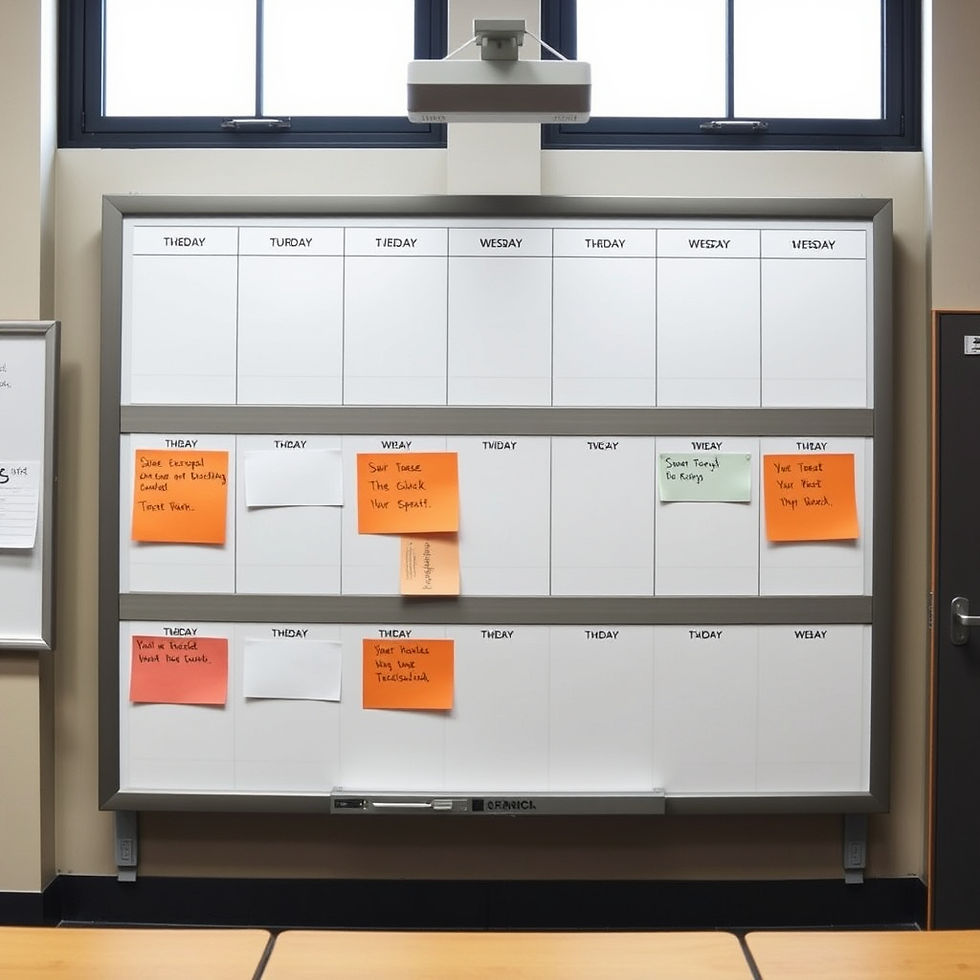How To Accommodate the Needs of Autistic Students-Setting the Scene in an Autism setting.
- Rosalie
- Sep 22, 2015
- 7 min read
Updated: Aug 10
Accommodating the needs of students in an autism setting.
Teaching autistic children requires a different skill set to teaching in mainstream schools.
In this post, I'm hoping to provide those teachers who are new to autism or still developing their understanding of autism, a simple guide outlining how to manage your classroom successfully.
I have often seen the quote, "If you have met one autistic child, you have met one autistic child".
Each student has his or her own interests, needs, and sensitivities and a complex set of symptoms which are different for each student. This impacts on the classroom teacher so an understanding of autism is vital.
However, there are some general strategies that can lead to successful teaching and I would love to share them with you.
Autistic students may not be particularly motivated to do as you ask them to do, especially when you are a new person to them.
When I was doing PECS training, my trainer said that you have to be that wonderful person who has exciting things in her bag(she actually used the term "grandmother").
*PECS-Picture Exchange Communication System, used for non-verbal children.
You have to have that repertoire of wonderful, exciting and motivating things to entice them with.
As with any student, you have to make an effort to get to know them by spending time with them and developing rapport.
Watch their body language, offer their favourite things, speak gently, and be patient with small steps.

Motivators are everything!
Do lots of observations at the start of the year, as well as talking to former teachers and parents, to find the child's motivators.
Then make a list of motivators for each child in a prominent position in the room for easy access by staff. As autistic children are not naturally disposed to gaining your approval or pleasing you, motivators are an extremely important part of the learning process.
I also had a colourful box for each child with their motivators, for easy access. Some motivators were in the box so the child could self-calm while other motivators would be used for communication purposes. They needed to be put away so the child would need to communicate with you to get them.
All children love bubbles. Many teachers use them throughout the day-group schedules at the start of lessons to get childrem calm and settled, or as individual motivators for requesting.

Anxiety
Students may display anxiety at the start of the year, with new staff and children.
It's okay to allow a very anxious child his own space. Put a barrier up (toy shelves) and then remove them as he became less anxious. I would recommend one staff member stay near him for a while (even a few weeks), copying his play from a distance or introduce the child to new activities by doing them near him, and letting him follow your lead. Then gradually introduce him to new staff members who will spend some quiet time with him.
I also used a strong motivator to entice a child to sit near other children, at group schedules. I did not fuss about whether he sat on the floor near them or on a chair, at this stage. That would become an objective for the child.
Make sure the teaching environment is sensitive to their needs.
Steer away from chaotic or too busy rooms as it may be overly stimulating for them
Have clear areas set up for group schedules, work tables, relaxation, book area, Quiet area, toy storage area, bags and clothes, communication boxes, routine displays, floor play and technology .
Have a large schedule board and daily routine displays in view for easy access throughout the day, and mini-schedules and PECS folders in an agreed place for consistency.
Have tables situated away from distractions e.g. large windows. Some children work better when their table is pushed against a wall so that the child is facing a wall while working.

Routine, Routine, Routine!
Depending on your class' abilities, you will have to decide whether to have a whole day's sessions immediately in view at the beginning of the day or whether it will only show the current session.
Some teachers have the large schedule board divided into 2 or 3 parts to cater for all levels of students' understanding ie. actual objects or replicas to represent sessions velcroed onto the board, then pictures and words, and sentences, if children are good readers. The schedule board is a powerful learning tool and children can learn to match pictures to words, read words alone or construct sentences that match the picture on the board. A great way to teach nouns( lunch, art, music, play) and high-frequency words.
If there is going to be a change in the day's routine and you know that a student does not tolerate changes, remember to display this change the day before it happens, along with a note to the parents so the student can be prepared for the change.
Some students may need the session broken up into smaller parts, using a mini-schedule as they cannot sit as long as other students.
By establishing a consistent timetable, the sessions will become predictable. This alleviates anxiety. As you see students developing with their skills at sitting calmly during sessions, you may introduce new skills, such as 'different' or 'surprise' to ease them into accepting changes.
Decide on what skills you will be doing on a daily basis and have the visual supports and words easily seen and accessible so all children can be engaged in the activity. Examples of this are constructing the days, or the whole date, weather chart, Who's here/ Not Here?, Jobs board etc.
Children will follow routines if you build engagement into your activities. Build engagement by having a shared classroom where all children help to construct the Schedule boards, sing, help the teacher with a modeled activity, turn music on or off, etc.
Remember to incorporate some movement into the start of your day as children have been sitting for a while in cars and buses. Ask the Occupational Therapist for help with this, or buy or borrow some movement to music tapes, or do an exercise program indoors or outdoors.
Regarding movement, my most successful year was one in which I walked for the first half hour of each day, except for one day of the week. It was part of some children's IEP's to learn to walk safely in the community. I can honestly say that it was a very calm year and staff remarked how calm the children had become. I did not work on one day and the teacher preferred not to walk. The staff (including the teacher) commented on how chaotic the day had been, although she was the second class teacher and in the room each day.
It's fine to have some children sitting for shorter periods and moving onto something else on their mini-schedules.
Remember to use OT aides with students who require them to sit properly. Bands and weighted pillows help children to sit for longer periods.
Use your Finish Box regularly. It is powerful as sometimes students do not respond to our voice but will respond to the Finish Box.
For non-verbal children who have difficulties following directions, choose parts of each session that are dedicated to them, for example, constructing the Who's Here/ Not Here Today? chart. They may require adult assistance, at first, but if done routinely, they will eventually do the activity independently. Engagement is important.
If a student is learning to sit at group schedules, it would be reasonable for the teacher to slide her chair to him, therefore not requiring him to get up and walk and do the activity at the front of the class.
Be respectful of stimming. It may be a sign that the child needs a short break or they may stim when relaxing. Often, if you try to eradicate it, you may end up with a stim that is more disconcerting!
For children who you know will not be able to sit for longer periods, allow them to request to leave and move onto a short activity related to their ILP. You need to trust that when you give them relevant choices, they will develop their skills.
Movement Breaks
If you see a child starting to jiggle and squirm, time for action. I wouldn't order a child showing a need for movement to sit down! Sometimes, it's as simple as holding the child's hand and walking them around the room or down the corridor and then they are ready to sit down again. But don't forget to use your child's Occupational therapist's recommendations at these times.
The best thing to counteract difficulties at times when the children are seated is to anticipate problems before they happen. That's why it's so important to know the child- his needs, sensitivities and focus levels. If you know what his attention span, you give the child a break before they are showing signs of restlessness-learn to avoid a behaviour by anticipating it, and giving a break.
Want to see more posts? You can access Home Page by clicking this button
Are you interested in education resources? Follow this link below
Please leave a comment on the Home Page or ask a question through the email link.
Did you like my blog? Don't forget to like it or share on my links FB, Gmail or Twitter.
Please feel free to visit me at (1) Autism | Facebook
Hope you enjoy this video by Amythest Schaber on Echolalia. Amythest is on the spectrum herself and she is an interesting and informative speaker.






















Comments